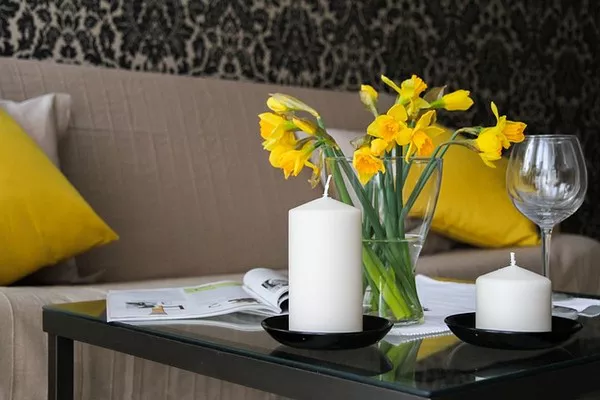The gift of flowers has been a symbol of love, appreciation, and celebration for centuries. From romantic gestures to expressing condolences, a bouquet of flowers conveys a myriad of emotions with its captivating beauty and fragrance. However, the cost of a bouquet can vary greatly, depending on various factors. In this comprehensive guide, we will explore the world of floral arrangements, shedding light on the factors that influence their price and helping you make informed decisions when purchasing or sending a bouquet of flowers.
1. Types of Bouquets
Bouquets come in various styles and designs, each catering to different occasions and personal preferences. Here are some common types of bouquets:
a. Hand-Tied Bouquets: These are perhaps the most classic and versatile type of bouquet. Hand-tied bouquets are expertly arranged and wrapped with ribbon, allowing the recipient to place them in a vase or enjoy them as they are.
b. Flower Arrangements: Flower arrangements are carefully crafted by professional florists. They often include a mix of flowers, foliage, and accents to create stunning displays suitable for centerpieces or larger displays.
c. Posies: Posies are small, compact bouquets, perfect for carrying or holding in one hand. They are often used in weddings or as thoughtful gifts for friends and loved ones.
d. Cascading Bouquets: Cascading bouquets have a dramatic, flowing design, with flowers arranged in a cascading manner. They are often seen in weddings and other formal events.
e. Nosegays: Nosegays are small, tightly packed bouquets, typically wrapped in ribbon and featuring a mix of blooms.
2. Factors Influencing the Cost
Several factors contribute to the cost of a bouquet of flowers. Understanding these factors will help you grasp the pricing dynamics and make an informed decision:
a. Type of Flowers: The types of flowers used in the bouquet have a significant impact on its cost. Rare or exotic blooms tend to be more expensive than common flowers. Additionally, seasonal flowers may be more affordable when they are in abundance.
b. Flower Quantity and Size: The number of flowers used and the overall size of the bouquet influence its cost. Larger bouquets with more blooms will generally be more expensive.
c. Design Complexity: Intricate and elaborate bouquet designs, such as cascading or unique floral arrangements, require more time and skill from the florist, contributing to higher costs.
d. Flower Quality: The quality of the flowers used also affects the cost. High-quality, fresh blooms that are carefully selected will be more expensive.
e. Customization: Personalized or custom-designed bouquets, tailored to specific preferences or themes, may incur additional costs.
f. Delivery and Packaging: If you opt for delivery services or special packaging, such as a decorative vase or gift wrapping, these additional services may result in higher costs.
g. Geographic Location: The cost of flowers can also vary depending on the region or country where they are purchased. Factors such as local demand, availability, and transportation costs can influence prices.
h. Seasonal Variability: The availability of certain flowers may fluctuate throughout the year. Flowers that are out of season or have limited availability may be more expensive.
3. Budget-Friendly Alternatives
If you’re looking for budget-friendly options for sending or gifting flowers, consider these alternatives:
a. Single Stem Flowers: Instead of a full bouquet, a single stem or a few carefully chosen flowers can make a beautiful and meaningful gift.
b. Potted Plants: Potted plants, such as succulents or flowering plants, are a longer-lasting and cost-effective alternative to cut flowers.
c. DIY Arrangements: Purchase loose flowers and create your own bouquet or arrangement. DIY arrangements can be a fun and affordable way to personalize your gift.
d. Local Flower Markets: Consider visiting local flower markets or farms, where you may find a wide selection of fresh flowers at more affordable prices.
e. Online Retailers: Online flower delivery services often offer a range of bouquets at different price points, with options to suit various budgets.
4. Additional Tips
When purchasing a bouquet of flowers, keep these additional tips in mind to get the most value for your money:
a. Seasonal Selection: Choose flowers that are in season to take advantage of lower costs and ensure the freshest blooms.
b. Compare Prices: Compare prices from different florists or online retailers to find the best deals and discounts.
c. Opt for Local Florists: Supporting local florists can sometimes lead to better deals and more personalized service.
d. Timing Matters: Avoid peak floral holidays, such as Valentine’s Day and Mother’s Day, when prices may be higher due to increased demand.
e. Take Care of Flowers: Properly care for your flowers to ensure they last longer and offer better value for your investment.
Conclusion
The beauty and charm of a bouquet of flowers make it a cherished gift for any occasion. While the cost of a bouquet can vary based on factors such as flower type, design complexity, and seasonal availability, there are numerous budget-friendly options to explore. Whether you choose a hand-tied bouquet, an elaborate flower arrangement, or a simple posy, the gesture of sending flowers will undoubtedly bring joy and warmth to the recipient’s heart. With these insights and tips, you can confidently navigate the world of floral arrangements, finding the perfect bouquet to convey your emotions and create lasting memories.


